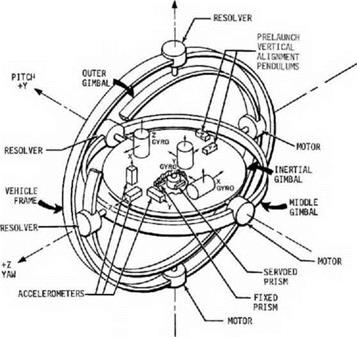LIFT-OFF Final seconds
At the very tip of the Saturn V stack, the rounded point of the launch escape lower (LET) included eight small holes which led to a device called the Q-ball. Shortly before launch, a cover was removed that had protected these holes from debris and insects. Their function was not dissimilar to the pitot tube seen on conventional aircraft for measuring airspeed, because the Q-ball similarly measured air pressure as the vehicle rammed through the atmosphere during the ascent. However, the point of eight holes on the Saturn was not to measure airspeed, but to measure whether the air was hitting them equally and thereby determine whether the rocket was flying straight and true through the atmosphere. The angle-of-attack that they sensed was displayed on a dial for the crew’s benefit. If the flight had to be aborted, and the spacecraft pulled clear by the escape tower, the Q-ball would then help to determine which way round the command module and tower were flying.
With two minutes to go, a crewman pulled a knob in the cabin which stopped coolant flowing to radiators on the side of the spacecraft. Normally, in space, these panels received hot liquid from the cooling system and shed that heat by radiation. However, as the rocket ascended, the frictional heat generated by passing through
|
RM. L +X
Schematic of the guidance platform within the Saturn Y instrument unit. (NASA) |
the atmosphere warmed the radiators, temporarily making them counterproductive, and so for the few minutes of ascent they were bypassed.











